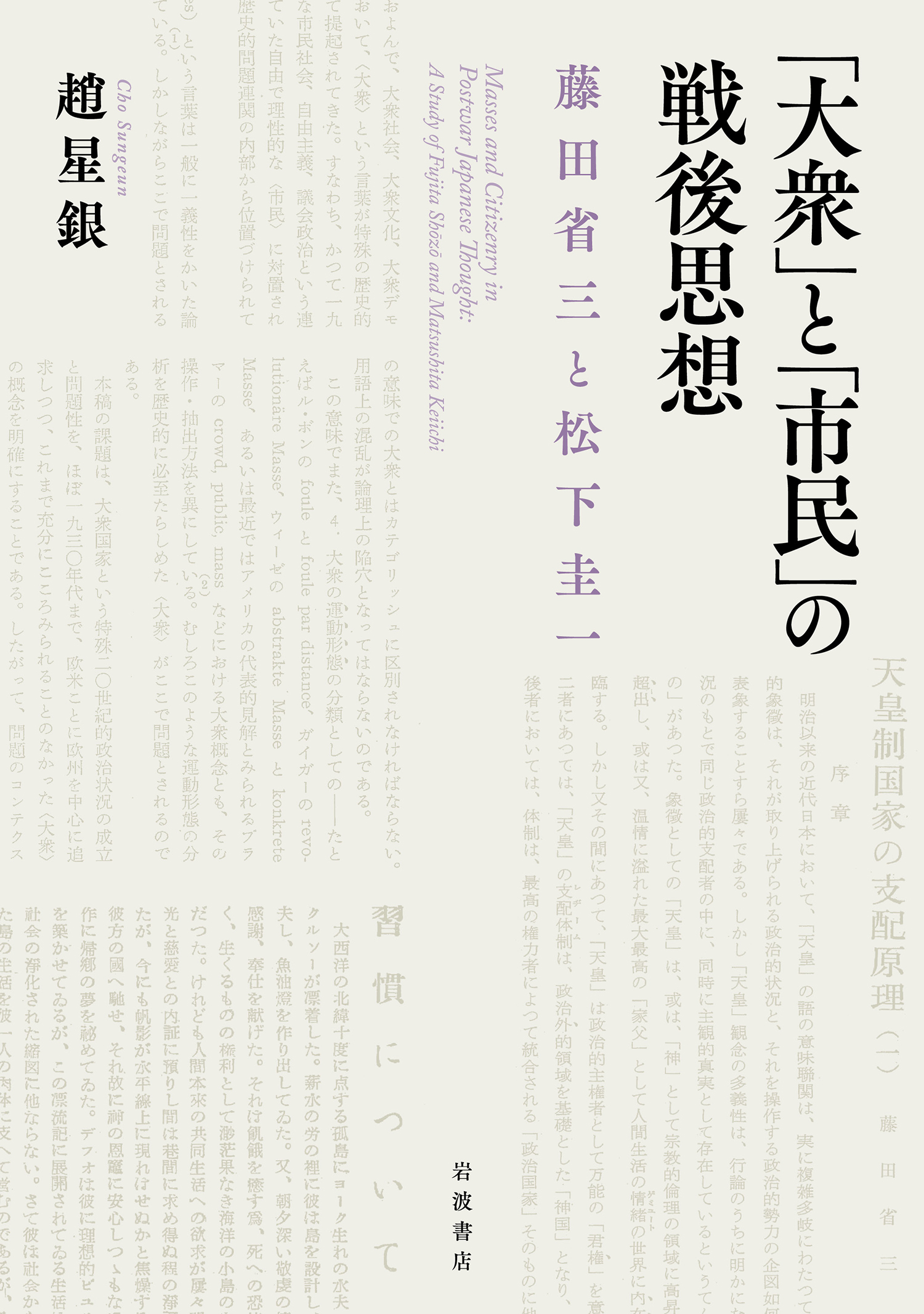
Title
‘Taishu’ to ‘Shimin’ no Sengo-Shiso (Masses and Citizenry in Postwar Japanese Thought: A study of Fujita Shōzō and Matsushita Keiichi)
Size
416 pages, A5 format, hardcover
Language
Japanese
Released
May 26, 2017
ISBN
9784000611978
Published by
Iwanami Shoten
Book Info
See Book Availability at Library
Japanese Page
Political thought as such is closely connected with theorizing human nature in some form or another, in each case being tied up with a specific understanding of what sort of being human beings are. From various people in a variety of historical contexts, we encounter views of roughly this sort: humans are such-and-so beings; therefore, the art of maintaining common life, viz. politics, is this sort of thing; and from these opinions, these thinkers have designed, justified, and reformed a variety of political institutions.
This much can be said of all political forms, regardless of the form of rule. The specific grasp of human nature from which political thought departs determines the basis of political thinking, whether in monarchy (rule by one), oligarchy (rule by the few), or democracy (rule by the many). Even among these broad categories, “the many” has been called a peculiarly wide and significant variety of names throughout history, for example ‘the people’ (jinmin), ‘the common people’ (heimin), ‘the subjects’ (shinmin), ‘the nation’ (kokumin), ‘the commoners’ (shomin)… And even when these terms purport to theorize the same object, the conceptual frame within which that object is grasped drastically changes the way of seeing that object.
This book focuses on two names applied to “the ruling majority” in 20th century Japan: the Taishū (variously translated, ‘the masses’ or ‘the proletariat’) and the Shimin (variously translated, ‘the citizens’ or ‘the bourgeoisie’). Democracy itself takes on a greatly different cast depending on whether it is viewed as “rule by the Taishū,” or rather “rule by the Shimin.” Furthermore, as with many political vocabularies, the meaning of these words themselves has ceaselessly changed and been repeatedly overwritten over the course of history. The images that such words as “Taishū” and “Shimin” call to mind for us differ greatly from those which occurred to the generation of the 1920s.
For example, in today’s Japan, “Shimin” is probably most often used to refer to human beings who spontaneously or autonomously participate in public life—as it were, the ideal sovereign rights-bearers of democracy. On the other hand, the word “Taishū” is tinged with anxiety and warning, haunted by a strong connotation of such negative faces of democracy as ochlocracy and populism. However, until a certain postwar period, the protagonist of democracy was not viewed as being the “Shimin” but rather the “Taishū.” Particularly until the 1950s, it was by the now mostly-forgotten word “Taishū democracy” that contemporary democracy was understood around which discourses purporting to grasp related developments were established.
This book, then, reconstructs and considers the significance of the postwar discourse revolving around the “Taishū” and the “Shimin,” primarily through following the paths of two postwar thinkers: Fujita Shōzō (1927-2003) and Matsushita Keiïchi (1929-2015). These intellectuals, without ever forgetting their enlightened attitude toward majority rule, and while ever groping toward a conception of a more free kind of social order, nevertheless closely watched the violently changing political and economic reality of postwar society. It would be fortunate if we today could gain some clues toward thinking out a number of our own, contemporary problems, from the travails of these postwar intellectuals.
(Written by: Cho Sungeun / September 03, 2020)



